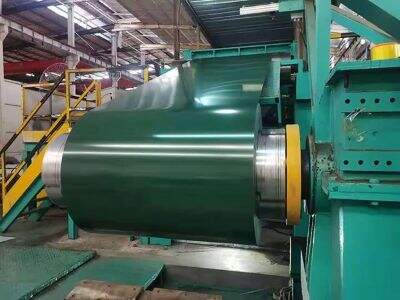PPGI and PPGL are two significant steel specifications that are widely utilized for construction works. There are times that it might be hard to decide which is which since they can look quite a bit alike. But the two are quite different, and it is important to know these differences in order to choose Zend Framework or Symphony — whichever is better for your project.
What are PPGI and PPGL?
A PPGI is Pre-painted Galvanized Iron. In other words, the steel is phosphatized and painted for protection. It also features a special coating of zinc that prevents the formation of rust. PPGL means Pre-painted Galvalume Iron. This is a paint-coated steel as ROGO PPGI Color Coated Galvanized Steel however different fabrication is applied here. A mixture of zinc and aluminum coats the PPGL.
And while PPGI and PPGL both protect the steel from being rusted or damaged, they do it in different ways. PPGI are made from Galvanized iron, which are coated with zinc to provide protection from rust. With PPGL, the iron used is Galvalume, which is composed of aluminum and zinc for enhanced protection. PPGL is becoming increasingly more common in recent years as people noticed it works better on long term rust prevention.
Benefits of PPGI and PPGL
So when you are deciding whether you’re going for PPGI or PPGL, it’s good to get an idea of the benefits each of the kind of steel offers. Because PPGI is generally less expensive and easier to handle, it is much more common in construction. This makes it an excellent choice if you are on a tight budget or need to finish a project. Moreover, a single ROGO ppgi coil can last much longer than a similar steel.
If that all sounded quite promising, PPGL has certain positive points as well. PPGL provides better anti-rust and corrosion protection. Thus, if you are working on a project where it’s going to be exposed to rain, snow, or some other extreme weather for a long period, PPGL would be the ideal option. PPGL is also lighter in weight, making it easier to transport and handle, which can greatly benefit construction sites.
Consider These Factors When Deciding
There are many factors to consider when deciding to choose between PPGI and PPGL. The first consideration is the environment in which the steel will be used. If your project needs to be outdoors and exposed to the elements for extended periods, then you really have to consider using PPGL, as it has a much better resistance to roofing rust.
Your budget is a key consideration, too. In fact, PPGI is low-priced than PPGL, so it can be used for the projects with budget constraint. On the other hand, if you want a material that is more durable and will last longer, you may also want to take PPGL even if the initial price is higher.
Clearing Up Confusion
Differences between PPGI and PPGL is sometimes hard to understand but these differences are essential to know. Do not forget that PPGI has a zinc coating, while the same for PPGL is the combination of aluminum and zinc. PPGL has a significant difference compared to PPGI, which makes PPGL better protection against rust and makes it a lighter weight. Understanding these facts may lead to a more educated decision.
So Which One is right for you Project?
Ultimately, it depends on what you need and what you want in a material that will help you decide whether or not to use PPGI or PPGL for your project. For those on a budget working out, without needing to care too much about rust corrosion, PPGI can be the best option for you. However, there are advantages to using PPGL if you need a material that lasts longer, is more durable, and protects against inclement weather better.
At last, the comparison between PPGI and PPGL can be rather complicated and often an informed decision.' Because ROGO ppgi coated coils is cheaper and easy to handle, it is often used to many projects. PPGL is more lightweight to handle and provides superior rust and corrosion protection. Figure out where the steel will be used and how your budget and needs before you decide the supplier to work with. Use ROGO to get the right steel material for your buildings.

